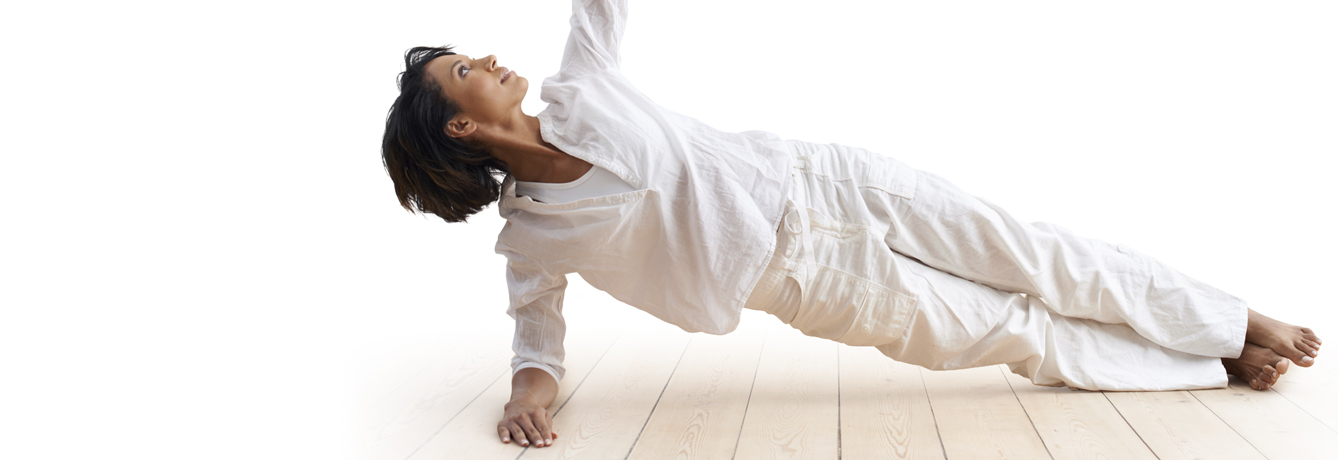Chaturanga, shavasana, parivrtta utkatasana. No, we’re not speaking in code, but if you’re one of the 20.4 million people in the U.S. practicing yoga, you already knew that. This traditional Eastern discipline has gained steady popularity in recent years, welcoming ancient Sanskrit into household terminology and the revival of stretchy pants everywhere. Yoga is celebrated for its power to improve flexibility, aid in weight loss, increase strength, and lower stress levels. Now, a new study suggests a yoga pose as a beneficial treatment for scoliosis.
For the study, researchers recruited 25 scoliosis (a condition in which the spine curves sideways) patients, ages 14 to 85 years from a private medical clinic in New York City. Doctors used x-rays to measure baseline spine curvature in all participants. Patients were then taught the side plank pose, or vasisthasana, which involves stacking one foot on the other; leaning one arm on the floor; and aligning the hips, shoulders, and arms while balancing on your side. Participants were instructed to perform the pose for 10 to 20 seconds daily for one week with their convex side facing downward in order to learn the pose. After the first week, patients were asked to hold the pose for as long as possible once daily.
After 6.8 months, x-rays indicated patients who held the pose daily – for anywhere from 50 seconds to four minutes – saw a 40.9% improvement in spine curvature, while those who practiced the pose only four days per week saw just 0.5% improvement. Results suggest this simple yoga pose could be effective in treating scoliosis. Doctors speculate the side plank pose strengthens back muscles along the convex side which might then strengthen the spine and reduce curvature.
Scoliosis affects six to nine million people in the United States, and when left untreated can result in pain, affect posture, impair physical function, and be detrimental to body image. However, surgery is costly and might involve wearing a brace that can restrict mobility and hurt self-esteem. Surgery typically brings a 44% to 59% reduction in spine curve. A simple daily yoga pose is a less expensive and more convenient method that can yield similar improvements. Yoga can also be applied as a home treatment and is not coupled with the stigmatism of a bracing treatment.
Consult your physician before beginning any treatment for scoliosis.
BONUS: Practice yoga to improve your mood. Previous research found a 20% reduction in tension anxiety scores, 10% less mood disturbance, and an 8% improvement in general outlook in teenagers who practiced yoga three times per week. Researchers from Boston University found that yoga novices enjoyed 240% higher mood scores after three months of practice.
Published January 1, 2015



